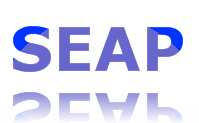
SEAP is a Semantic Annotation and Profiling tool which allows the selection and visualization of native Web Services interfaces and the ENIO ontology and supports the user to annotate (through a drag and drop utility) the input and output message parts of a selected Web Service interface with business data entities of the ENIO ontology.
#Description:
The Semantic Annotation and Profiling tool supports the user to provide business data related semantic annotations to specific web services exposed from enterprise applications.
The SEAP tool enables the user to graphically define the required transformations of the output and input messages between web services with regard to the respective data entities (used for the annotation of these message parts) of a common ontological model. These transformations are further utilized to enable dynamic data mediation among several interconnected enterprise services, during the execution of a business process which contains these services.
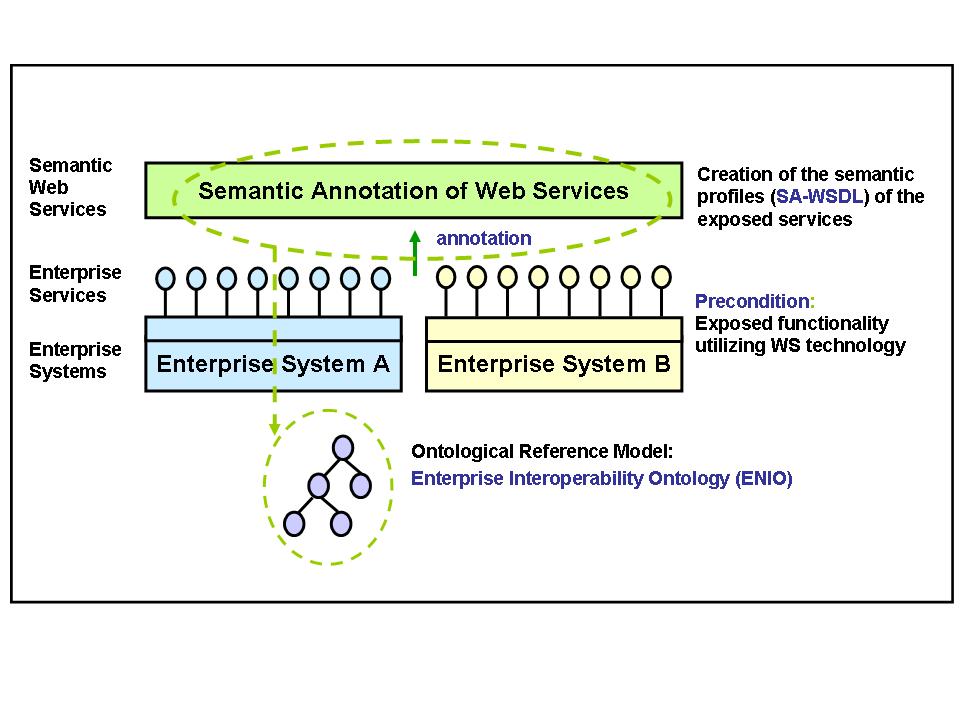
As shown in the figure below, the graphical user interface of SEAP comprises of five main areas. In the left side, we have the Native Services Area that is responsible for the visualization of the selected, native Web Services that are exposed from the existing business system of an enterprise.
In the middle, we have the Ontology Browser area that is responsible for visualizing all the tree facets of ENIO, i.e. the Functional, the Data and the Behavioral one, as well as, the Ontology filtering area, which sorts out the visualized ontological concepts, based on given keywords.
Finally, in the right-hand side, the Adaptation Layer Services area visualizes the mediated services that comprise the respective collaborative business process, and the Adaptation Layer Concepts area, which contains the ontological concepts that annotate inputs and outputs of the services involved in the respective collaborative business process.
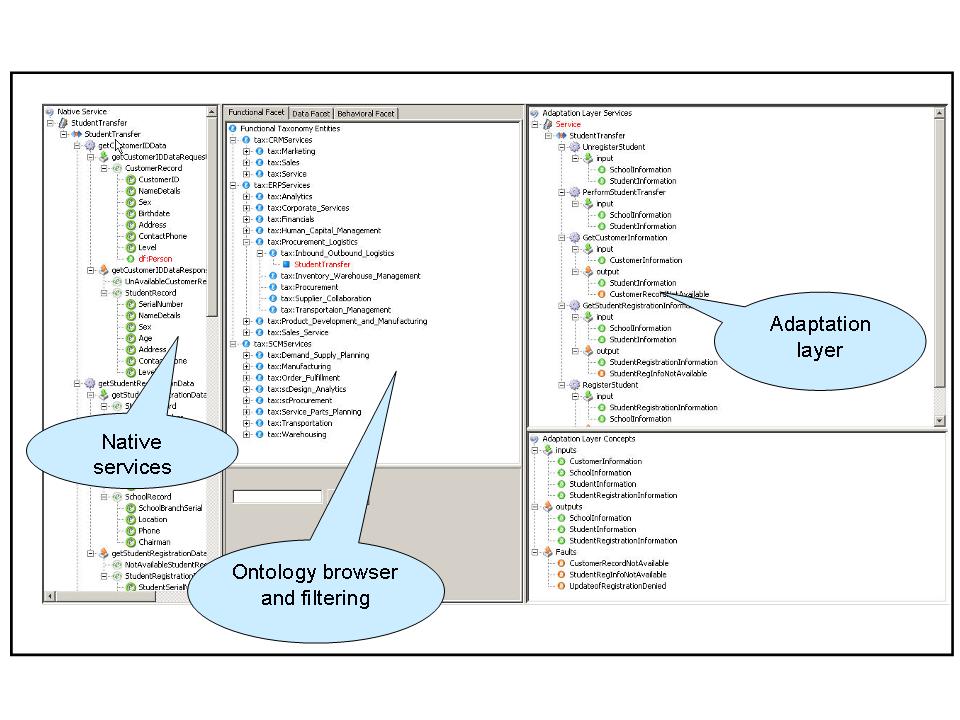
The user is allowed to drag and drop ontological concepts of the ENIO Data Facet visualized in the Ontology Browser Area, annotating the input and output message elements of the native WSDL interface visualized in the Native Services Area. In parallel, the adaptation layer services and concepts are automatically created.
Once the annotation procedure is completed, the user is guided to provide and graphically define the respective XSLT transformations from (for input messages) and to (for output messages) the Enterprise Interoperability Ontology. The up- and down-casting transformations are stored along with the data semantics annotations to the SAWSDL-compatible semantic profile of the selected service.
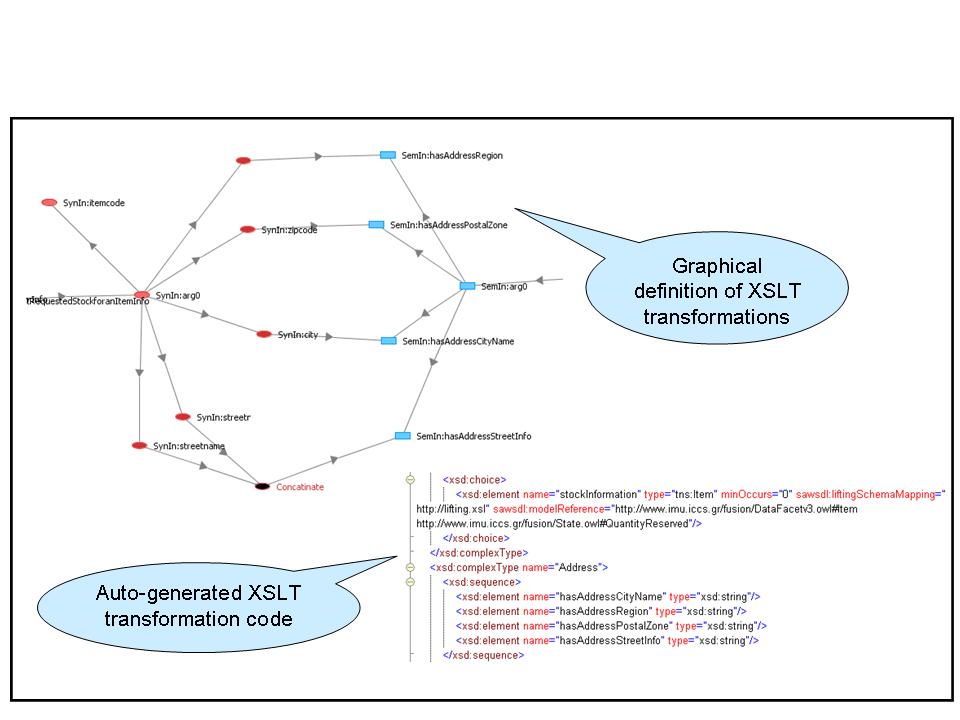
Thus, these semantic extensions (i.e. data annotations and XSLT transformations) are further utilized during the execution of generated collaborative business process models that interconnect and orchestrate already annotated enterprise services.
#Publications:
- Bouras, T., P. Gouvas, G. Mentzas (2008) Dynamic Data Mediation in Enterprise Application Integration , in O. Cunnigham and M. Cunnigham (eds) Collaboration and the Knowledge Economy: issues, Applications and Case Studies, pp. 917-924, eChallenges e-2008 Conference, 22 – 24 October 2008, Stockholm, Sweden
#Downloads:
The SEAP tool is available here
You may check out a presentation on SEAP
You may also check out a video which describes the functionality of SEAP
